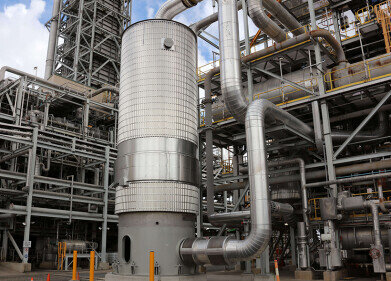Air Clean Up
How Does Hot Weather Affect Emissions from Roads?
Sep 22 2020
Hot weather can have a significant impact upon the emissions created by asphalt roads, according to a new study. Collaborative research from the Carnegie Mellon University and Yale University in the USA and the Max Planck Institute for Chemistry in Germany found that when the substance was exposed to temperatures commonly experienced during summer, emissions rose by as much as 300%.
The news gives food for thought to a scientific community which all too often focuses on the tailpipe emissions of cars in towns and cities. The asphalt surface which supports them – and which is commonly used on rooftops as well – is given less credence, despite the fact that it too contributes emissions that are responsible for air pollution and global warming.
SOAs under the radar
While many of the headlines surrounding urban emissions concentrate on improving air quality and reducing transport related pollution, less attention is paid to secondary organic aerosols (SOAs). These are derived from non-combustive sources and although they can arise naturally, the most common sources of them in an urban environment are paints, cleaning products and asphalt.
Indeed, the average American city sees asphalt make up almost two-thirds of its urban landscape. 45% of the total surface area is given over to paved areas using the substance, while a further 20% is accounted for by building roofs containing asphalt, too. Therefore, the emissions generated by this substance should not be discounted, even though they pale in comparison to those created by the automotive industry.
Heating up
The researchers behind the recent study exposed asphalt to different temperatures between 40°C and 200°C in a tube furnace, then measured the emissions generated by the substance using sophisticated air quality monitoring techniques. They found that the emissions of SOAs doubled when the temperatures reached between 40°C and 60°C, a not uncommon occurrence in summertime.
“We found that emissions from asphalt were strongly dependent on both temperature and solar exposure,” explained Drew Gentner, one of the authors of the paper. “Hotter, sunnier conditions will lead to more emissions. Additionally, in many locations, asphalt is predominantly applied during the warmer months of the year.”
Non-tailpipe emissions
Pre-existing research from Los Angeles has suggested that a significant percentage of the emissions generated in the city do not come from vehicular traffic. Nonetheless, mainstream media focus and legislative efforts continue to concentrate on phasing out more polluting forms of transportation in a bid to drive down the emissions footprint of urban epicentres.
While such measures are, of course, moves in the right direction, little thought is given to other sources of pollution such as asphalt. Given that it’s a key component of roads, driveways and roofs all over the globe, it’s likely that asphalt may be here to stay, so the emissions generated by it should not be underestimated. This study puts that contribution into context and prompts questions over whether more sustainable substances should be used in surfacing in the future, especially in warmer climes.
Events
May 13 2024 Munich, Germany
May 23 2024 Beijing, China
May 23 2024 Beijing, China
Jun 10 2024 Algiers, Algeria
Jun 10 2024 Frankfurt, Germany














